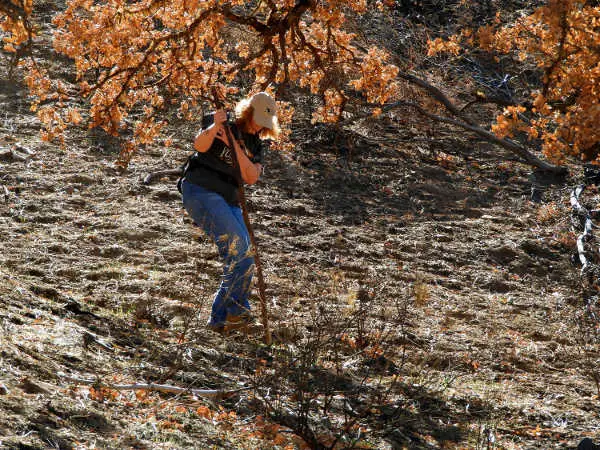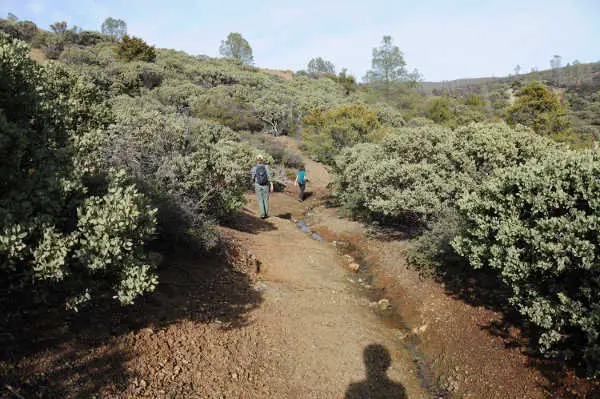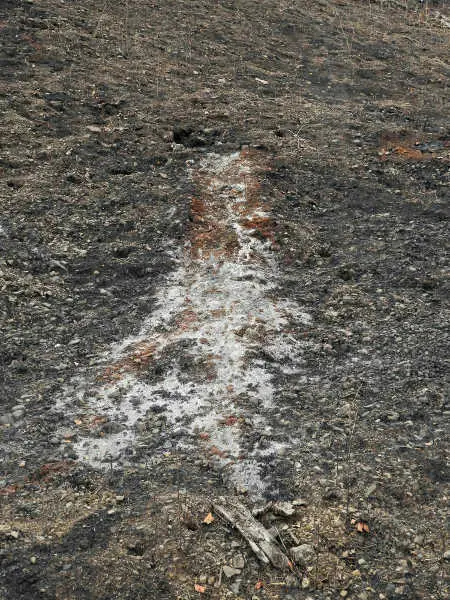
NORTHERN CALIFORNIA – In June the second of two wildfire seasons start in California.
The first fire season is between October and April when the Santa Ana winds are most prevalent, and the second season typically runs from June through September when heat and lots of dried ground cover provide breeding grounds for the flames.
This is a good time, then, to reiterate some of our tips for hikers who are going out during the hotter summer months when wildfires can be a factor.
Taking reasonable precautions during fire season before going out on a hike is the first best defense against getting trapped in a remote area with a wildfire on the way.
Before heading out, check with the local fire services for notices about possible burns or risk concerns in the area. Take the time to not only plot the course of your hike, but also to plot escape routes.
Remember: Getting away from the burn is more important than getting back to your car or the trailhead.
Tell friends and family where you’re going and when you expected to be back, so they’ll know where to direct emergency personnel to start looking if you don’t come home on time.
Bring something shiny with you, like a mirror, to signal with if your trapped by the fire. Wear bright clothing, so you’re easy to spot at a distance or from above. Don’t wear synthetic clothing, as synthetics can melt directly onto your skin if the fire overtakes you.
Watching for signs of fire is another good defense against getting trapped by a wildfire. The acrid scent of smoke or seeing smoke are obvious indicators that a fire is nearby. If you see ash or sparks in the air, it means the fire is probably less than a mile away from you and you should take immediate measures to safely leave the area. Even small fires can loom large in just a short amount of time, so don’t underestimate the danger of tiny floating sparks.
When trying to escape a fire, face the wind and move downhill whenever possible. Remember, heat rises, so fire will run up the side of a hill or embankment much quicker than it will move down it.
Moving down into shadier areas also moves you down into spots where streams and groundwater may help to keep the plant-cover more moist. Be careful of canyons and deep ravines, however. These landscape features can actually act like giant chimneys and draw the fire and smoke up into them.

Also be aware of the plant life around you. Some plants are highly flammable: manzanita, for example. Its roots are shallow and vulnerable to heat, and the bark is thin and peels off with age, so it offers the shrubs little protection from wildfires.
Whenever possible, move along areas that won’t provide the fire with any additional tinder, such as wide dirt trails or fire breaks, paved roads, or rocky and gravelly areas.
Some believe that going back over areas that have already been burned may provide some protection because the fuel there has already been consumed.
Be aware, however, that such areas may still be extremely hot to walk on, and extra heat on an already hot day is not your friend. Also, some fire-remnants can often smolder deep in the root cavities of the burned shrubs and trees and can reignite without warning.
Never try to outrun an oncoming wildfire; it can move as quickly as 14 miles per hour.
If you do find yourself trapped by the fire, and you can’t get out into a large water source (such as a deep stream or lake) do NOT douse your clothes with water. If the fire reaches you, it can cause the water on your clothes to super-heat and turn to scalding steam.
If the fire is going to overtake you, find a relatively clear space on the ground, pull up any weeds or brush you can, and create a shallow depression to lie in. The bigger the space you can clear for yourself, the better. Take off your backpack but keep it nearby in case you need to use it as a heat shield. Then lay face-down in the depression with your feet in the direction of the fire.
As horrifying as being trapped by a wildfire may seem, keep in mind that if one does overtake you, it may pass over you in less than a minute or so. The heat will make it difficult to breathe but try to keep yourself low to the ground and as calm as you can.
To avoid situations like this, however, it’s always best to arm yourself with as much information as you can before going out on the trail.
Stay alert and stay safe.
Mary K. Hanson is a Certified California Naturalist, author, nature photographer and blogger ( https://chubbywomanwalkabout.com/ ) who is living with terminal cancer. She also teaches naturalist classes through Tuleyome, a 501(c)(3) nonprofit conservation organization based in Woodland, Calif. For more information, visit www.tuleyome.org .


 How to resolve AdBlock issue?
How to resolve AdBlock issue? 





